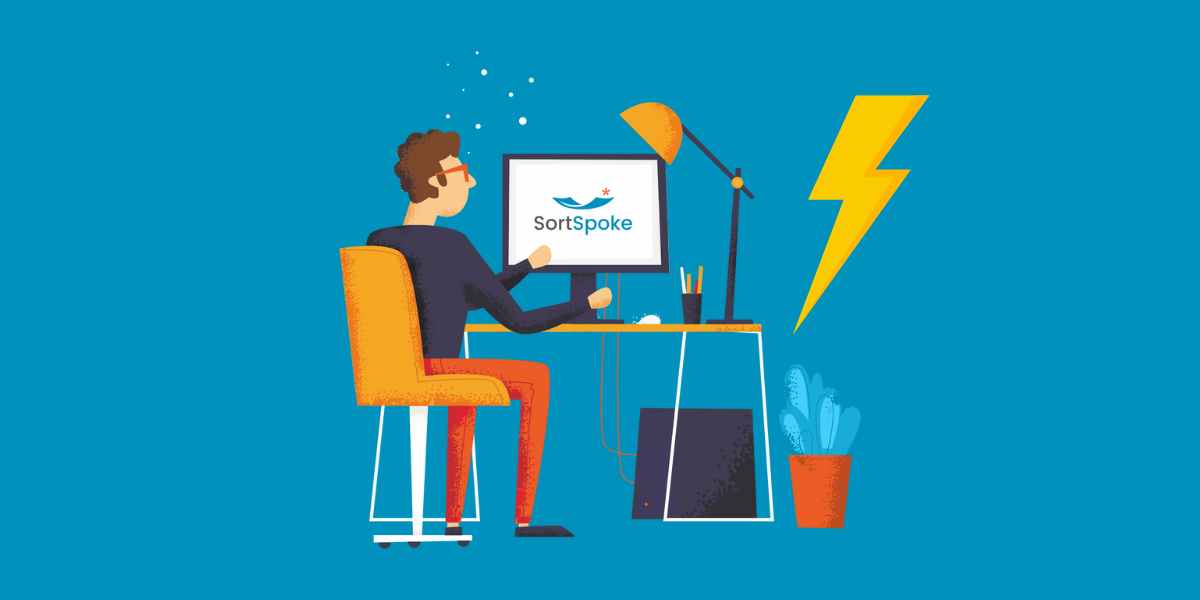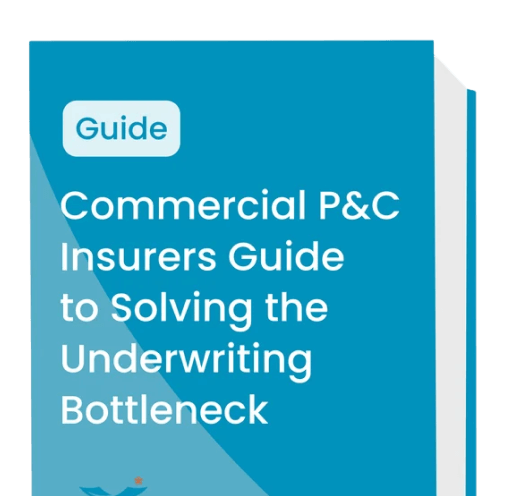
Evolution of Data Extraction: From OCR to Intelligent Document Processing (IDP)
Data extraction technology has evolved greatly over the years. For a long time, Optical Character Recognition (OCR) technology was the only reliable option beyond manual data entry. OCR systems identify characters in images or photos of text and convert them into a machine-readable format so that other software packages can save, edit, and search the data.
This technology laid the groundwork for more advanced Intelligent Document Processing (IDP). IDP systems go beyond simple character recognition by using machine learning (ML) to provide high-quality data extraction in addition to contextual understanding and workflow automation support. Advanced IDP systems can process structured and unstructured data, an important capability for driving digital transformation within insurance providers, streamlining operations, and enhancing efficiency.

I really like SortSpoke because of the ability to extract information from unstructured documents in a very user- friendly, interactive way," the AVP said. "No other product out in the market does that."
- AVP, Data Analytics, Great American Custom Insurance
In short, OCR turns pictures of words into text; IDP turns text into actionable data.
This guide explores the evolution of data extraction from its OCR roots to modern AI-powered IDP systems. It gives you the context to decide which technology is best for your agency’s data extraction needs.
What is OCR?
Optical Character Recognition is a technology that converts text from scanned documents, images, or photos into machine-readable text. This enables the digitization of printed materials like books and articles, as well as the electronic processing of business documents, including underwriting submissions or insurance claims packets in the insurance industry. The goal of digitizing this data is to make the content editable, searchable, and more easily storable.
Versions of OCR technology have been commercially available since the 1970s. Advances in document scanning technology, AI, and machine learning have made it more reliable and widely available since those early days.
During an OCR data extraction, the hardware and software involved will “clean up” the image by modifying its contrast and resolution so characters are more easily detectable. Then, using pre-trained language models, the OCR algorithm will detect written content for extraction. Once extracted, the data is compared against a database of predefined patterns or templates that represent known characters and symbols. The final output is machine-readable text, ready for further processing.

What is IDP?
Intelligent Document Processing (IDP) is the latest evolution of data extraction technology. While OCR plays a role in supporting modern IDP tools, IDP leverages AI and machine learning (ML) to interpret processes, and even categorize various data types found in documents, much like a human would. That can include highly structured and unstructured data—like hand-written notes scribbled in the margin of an underwriting form.
IDP systems employ ML models to categorize documents based on their content, layout, or other attributes. For instance, different financial forms might be classified, such as "Bank Statements" or "Loss Runs." These categorized documents are then analyzed by trainable extraction models that can understand and pull critical business information from the content. The extracted data is validated against predefined rules or matched with existing databases, like a company's client records. If discrepancies arise, the issues are flagged for human review, supporting a human-in-the-loop (HITL) approach that continually refines the extraction process through manual feedback and corrections.
OCR vs IDP—which is right for you?
It depends on your use case. OCR is a well-established data extraction technology, but its capabilities end there. It is limited to recognizing and extracting characters. It does not interpret the meaning behind the text. IDP, on the other hand, is capable of data extraction and many forms of workflow automation. This is due to the added ML tools embedded within IDP technology. These additions enable IDP systems to “understand” the context and significance of the text they process and the relationships between different sections of text.
This deeper understanding allows IDP to analyze text, make informed decisions about its relevance, and determine appropriate actions based on the content, making it a more comprehensive and intelligent solution than OCR alone.
OCR Pros
- Low cost per page—OCR technology is generally less expensive than more advanced Intelligent Document Processing (IDP) solutions. It provides a cost-effective option for businesses that simply want to digitize simple documents without worrying about how that data needs to integrate into workflows.
- Works well on structured documents Works well / better fit for specific use cases with easy & structured documents. OCR converts large volumes of scanned documents into editable and searchable text quickly
- Ease of operations—Once configured, OCR systems are relatively straightforward to operate. This makes OCR a practical choice for organizations that need basic text extraction in use cases where there aren’t unstructured or complex documents.
OCR Cons
- Limited contextual understanding—OCR technology works simply by recognizing characters and converting them into digital text. Unlike IDP, it cannot understand the context or the semantics of the text it processes. This makes it less effective for tasks that require interpretation or workflow decision-making based on the content of the documents.
- Limited use cases—OCR systems generally perform well with structured documents with clear, consistent layouts and typography. And for print materials, those that scan clearly. However, OCR often cannot handle unstructured documents, handwritten notes, or documents with complex layouts and mixed media.
- Requires high-quality images—OCR’s effectiveness heavily depends on the quality of the input document. Poorly scanned images, documents with smudges, or faded text can lead to high error rates in character recognition.
- Does not learn —Unlike IDP systems incorporating machine learning algorithms, traditional OCR cannot adapt over time. OCR systems do not learn from their mistakes or adapt to new document types without manual intervention.
- Expensive to set up & maintain - Costs associated with installing and customizing OCR tools to your specific needs can require specialized resources and depending on the variety of documents you have, can be very costly to setup. Also, maintenance of OCR templates and configurations over time can be significant when updates are needed.
IDP Pros
- Handling of unstructured data—Some IDP systems leverage machine-learning technology with contextual understanding. That means they excel in processing both structured and unstructured data. They can manage various document formats and types, including emails, PDFs, images, and handwritten notes.
- Improved accuracy—With the integration of AI and ML, IDP systems continuously learn and improve over time, leading to higher accuracy in data extraction and fewer errors compared to traditional OCR.
- Reduction in manual work—By automating complex document processing tasks, IDP significantly reduces the need for manual data entry and verification, freeing up human resources for more value-added activities.
- Scalability—IDP systems are designed to scale with your business needs. They can handle large volumes of documents and complex processing requirements without a proportional increase in effort.
- Integration capabilities—Modern IDP solutions can easily integrate with existing business systems and workflows. This seamless integration facilitates better data flow and accessibility across different platforms, enhancing overall business operations.
IDP Cons
- Upfront costs—Implementing IDP solutions can involve substantial upfront investments. Costs may include purchasing software, integrating systems, and training employees to use the new tools effectively.
- Implementation time—Machine learning systems take time to reach full capability. They need to be trained on the types of documents your organization typically works with. So, sometimes, setting up an IDP system can be technically challenging or more time-consuming than some users expect. Look for a leading IDP solution that can offer short-term and longer-term value for different document types.
- Maintenance—IDP systems, especially those utilizing machine learning, require ongoing training to maintain and improve accuracy. This involves initial training with large data sets, continuous updates, and retraining to adapt to new types of documents and changes in data formats.
Get the best of OCR and IDP by leveraging SortSpoke
SortSpoke transforms your document workflow for greater speed and better outcomes. Our IDP platform swiftly digitizes simple documents and tackles the toughest unstructured data with the help of human experts. This means up to 5x faster processing of complex insurance forms, applications, and notes.
We handle the formats you need – Office files, images, PDFs, even handwritten documents – in many languages. Experience faster processing, reduced errors, and the power to unlock valuable insights hidden in your documents.
These comprehensive data processing capabilities provide unmatched efficiency and support to underwriters. Through our innovative solutions, we're not just processing data. We're transforming the landscape of insurance underwriting for the better.
Are you researching IDPs? Check out our Buyer's Guide & Evaluation Checklist for AI-Powered IDP Software







